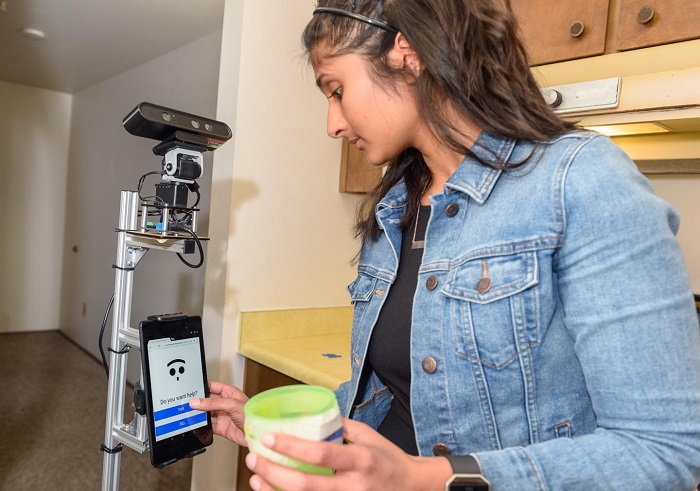
New York, Scientists have created a robot that could help elderly people with dementia and other limitations live independently in their own homes.
The Robot Activity Support System, or RAS, developed by the Washington State University (WSU), uses sensors embedded in a smart home to determine where its residents are, what they are doing and when they need assistance with daily activities.
It navigates through rooms and around obstacles to find people on its own, provides video instructions on how to do simple tasks and can even lead its owner to objects like their medication or a snack in the kitchen.
“RAS combines the convenience of a mobile robot with the activity detection technology of a WSU smart home to provide assistance in the moment, as the need for help is detected,” said Bryan Minor, postdoctoral student at the WSU.
With a number of adults over 85 needing assistance with every day activities such as preparing meals and taking medication, the researchers hope that technologies like RAS and the smart home will alleviate some of the financial strain on the healthcare system and make it easier for older adults to live alone.
“Upwards of 90 per cent of older adults prefer to age in place as opposed to moving into a nursing home,” said Diane Cook, Professor at the WSU.
“We want to make it so that instead of bringing in a caregiver or sending these people to a nursing home, we can use technology to help them live independently on their own,” Cook added.
In the study, detailed in the journal Cognitive Systems Research, the team recruited a small group of students to complete three activities — getting ready to walk the dog, taking medication with food and water and watering household plants — in a smart home with RAS as an assistant.
When the smart home sensors detected a human failed to initiate or was struggling with one of the tasks, RAS received a message to help.
The robot then used its mapping and navigation camera, sensors and software to find the person and offer assistance.








